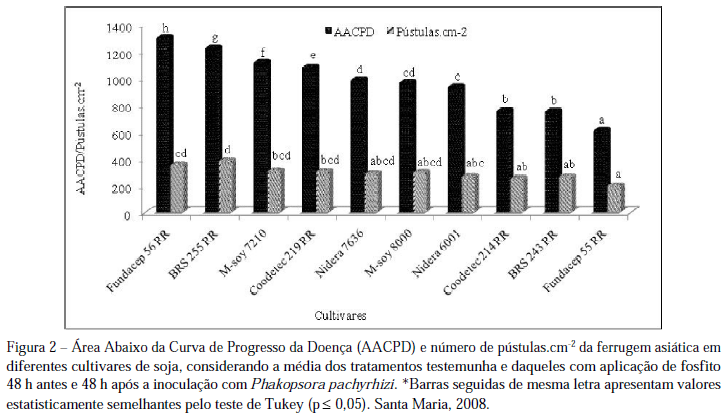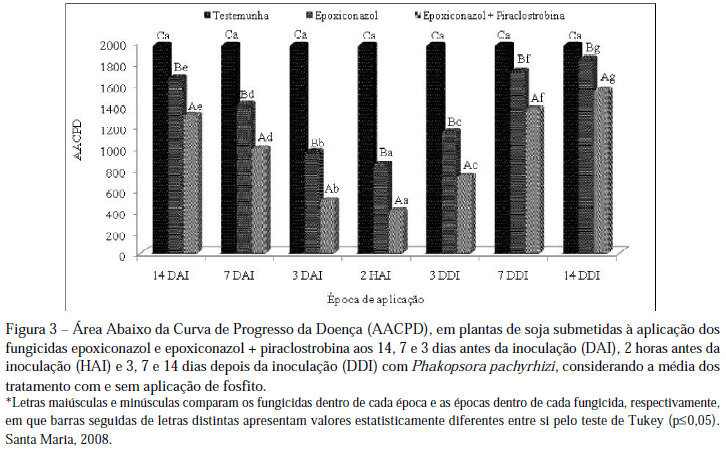The effectiveness of defense activation in different soybean cultivars against P. pachyrhizi promoted by phosphite, as well as its association with fungicides in different timing of application in relation to pathogen inoculation, was studied in greenhouse conditions in two assays carried out in completely randomized design, with four replications. The results shown that phosphite was unable to induce defense, because no reduction of severity, pustules.cm-2 number, and Area Under Progress Disease Curve (AUPDC) were observed after the application of the product. The progress of rust was slower in the cultivar Fundacep 55 RR, which had a AUPDC 53% lower than cultivar Fundacep 56 RR, the most susceptible one. The fungicide epoxiconazole + pyraclostrobin reduced 29% the AUPDC value when compared to isolated triazol use, considering average timing application. Applications nearer to inoculation and preventive fungicide application were more effective than those done earlier or later in relation to plant infection by the pathogen. The data indicated that phosphite does not induce soybean resistance against P. pachyrhizi, and that there was variation on partial resistance of cultivars and on the effectiveness of fungicides between themselves and in relation to their application timing.
Resistance induction; partial resistance; soybean cultivars; Asian rust; fungicides



